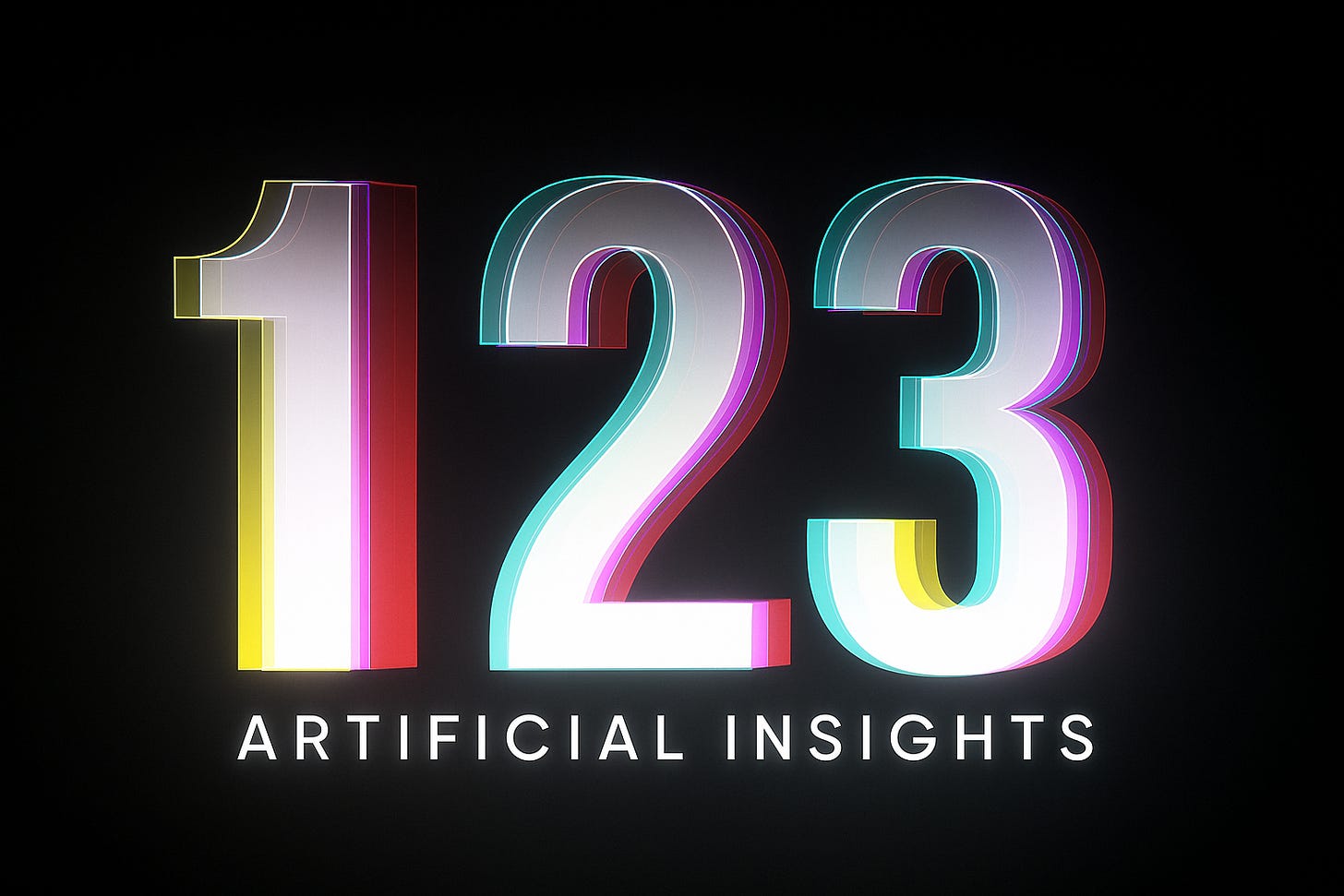Experimental Environments (123)
Welcome back to Artificial Insights, your near-weekly bulletin from the near future.
I’ve been thinking a lot about audiences lately. If AI becomes one of our primary audiences, then who are we really writing to? We used to create for others and for ourselves, and that hasn’t changed – but now there’s a third presence: the gaze of language models. The internet has been swallowed whole and returned to us as averages and probabilities. I haven’t seen studies comparing how much of what we read is written by people versus AI, but I can imagine the curve.
—
If thinking refines ideas, creating brings them into form, and building turns form into function, then deciding is what makes all of it matter.
This is the fourth chapter in an ongoing attempt to document how I actually work with AI. I started with thinking, moved through creating and building, and now I’m examining the dimension where these converge: the act of choosing what to do next.
I’ve learned that AI changes how decisions become visible. Most choices happen half-formed, shaped by instinct, pressure, or habit. When I externalize that reasoning through conversation with AI, the hidden structure reveals itself – what I’m optimizing for, what I’m avoiding, and where emotion is disguising itself as logic.
This clarity doesn’t make decisions easier, but it makes them more honest. By thinking aloud with a system that reflects intent without judgment, I can see my reasoning as something separate from myself – an object to examine, adjust, and stress-test before committing.
These field notes document how I use AI to decide. I’m not delegating judgment; I’m using AI to make the mechanics of choice legible enough to trust. The notes themselves are co-created with AI, mostly by asking ChatGPT to review its memories of me and surface the patterns underneath my interactions.
How I decide with AI:
Talking through decisions: When facing unclear choices, I describe the situation, constraints, and stakes. AI helps map the decision space by restating options, surfacing assumptions, and clarifying what I’m actually optimizing for.
Proposal development: Before sharing recommendations, I test them against AI by outlining options, assumptions, and risks. It helps me frame choices in ways that invite informed agreement rather than defensiveness.
Market intelligence: When I enter unfamiliar domains, I build fluency fast by asking AI to explain landscapes, competitors, and trends. I intentionally diversify across providers to reduce single-model bias.
Decision debriefing: After major calls, I talk through what was decided, why, and what signals would suggest I was wrong. AI helps capture rationale while it’s fresh, compounding future judgment.
Financial planning: I model scenarios by describing cash flows, risk tolerances, and time horizons. AI helps align decisions with goals rather than reacting to urgency.
Deciding becomes deliberate when you treat judgment as something to externalize, examine, and refine. That’s the practice I’m trying to develop, and the one these notes are meant to record.
Until next week,
MZ
What else can I become? (56 min)
Spectacular interview by Sinead Bovell with Alexander Manu.
AI Product Masterclass (1h20min)
The inimitable Fei Fei Li on AGI.
Synthetic 3D environments are becoming a thing.
AGI is AI we haven’t invented yet (53 min)
Interview with Reid Hoffman on A16Z.
From Reddit, apparently showing the messages a teacher received from students caught using GPT.
If Artificial Insights makes sense to you, please help us out by:
📧 Subscribing to the weekly newsletter on Substack.
💬 Joining our WhatsApp group.
📥 Following the weekly newsletter on LinkedIn.
🦄 Sharing the newsletter on your socials.
Artificial Insights is written by Michell Zappa, CEO and founder of Envisioning, a technology research institute.
Thanks for reading Artificial Insights! Subscribe for free to receive new posts and support our work.










I totally resonate with this, you absolutly nailed how AI really clarifies our decision-making process, making it so much more honest.